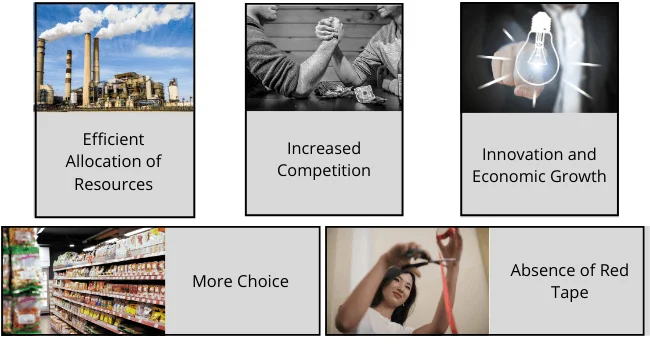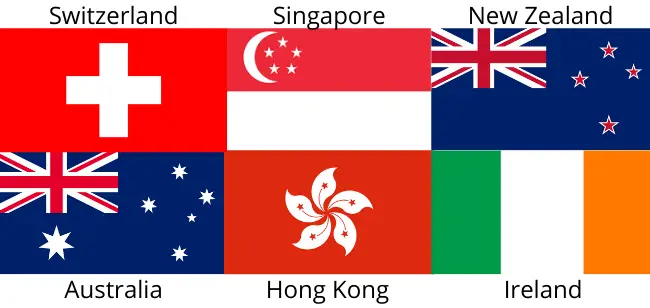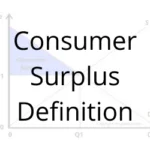Free Market: Definition, Pros, Cons & Examples

What is a Free Market Economy
A free market is an economic system where individuals are free to engage in economic activities without government interference. This means there are no subsidies, limited regulations, and low taxes, and the government’s involvement is limited to defense, law, and policing.
In a free market, the economy is driven by voluntary exchanges based on supply, demand, and the pricing mechanism, also known as the “invisible hand,” as originally coined by economist Adam Smith.
To put it simply, if there is no demand for a good, it will no longer be produced. As demand increases, suppliers receive a signal to produce more, which causes prices to rise and incentivizes increased production until demand is met. This results in prices falling to the equilibrium point.
Key Points
- A free market is where economic transactions take place without the involvement of government.
- Free markets are characterised by the absence of tariffs, quotas, regulations, subsidies, and other government restrictions.
- Free markets tend not to exist in today’s world as most governments exert significant influence in the economy. Although Singapore and Hong Kong are the closest examples we see today.
Free markets and laissez-faire capitalism are often used interchangeably. Translated, ‘laissez-faire’ simply means ‘leave us alone’ – originating from 18th century France, under the rule of King Louis XIV. He asked the nation’s physiocrats how he should support the economy, with their reply being ‘leave us alone’.
At the core of free markets is voluntary cooperation. That means that while restrictive regulations can be a part of free markets, they must be agreed upon collectively. Those that are agreed upon at governmental level are not considered to be part of free market economics. This is because the ultimate decision is taken by a handful of politicians and not the people doing business in the wider economy.
Free markets rely on one key aspect – if people are not willing to pay above the cost of production, the good or service will not be produced. Anything else is inefficient as it distorts how people value a given good. By introducing regulations, tariffs, or subsidies, prices become distorted – meaning people may buy more of Product A simply because it is cheaper, even though they may prefer Product B.
Characteristics of a Free Market Economy
1. Competition
In a free market, barriers to entry are relatively low. However, regulations can hinder new firms from entering, and minimum wage laws can place a strain on small businesses. For instance, occupational licensing in the US limits cross-state migration and reduces the number of people working in those occupations, resulting in decreased competition. Such regulations not only restrict new competition but also add pressure to the existing firms in the market.
2. Freedom of Choice
In a free market, individuals have the freedom to make choices for themselves. This means that there are no regulations in place that prevent them from using an unlicensed osteopath, for example. Additionally, there are no taxes imposed to discourage the consumption of unhealthy foods and beverages. Everyone is free to choose as they see fit.
3. Individual Co-operation
Free markets prioritize the concept of individual freedom and non-coercion. While regulations may exist, they are only implemented through a co-operative agreement among individuals. In a free market, transactions are solely between the buyer and seller without any external involvement.
4. Limited Government Involvement
In a free market, governments have minimal involvement, which means that any policies that affect supply and demand, such as subsidies, tariffs, quotas, or regulations that shift the equilibrium, are discouraged.
While governments may provide basic functions like defense, law, and policing, their role is kept minimal to prevent significant impact on the overall economy.
5. Private Ownership of Resources
In a free market, private entities have complete control over resources. The government’s involvement is limited to core functions such as defense, policing, and the rule of law.
This allows the profit incentive to determine what is supplied to the market. When governments control the market, goods are either oversupplied or undersupplied, resulting in an imbalance between supply and demand. This is because governments are not constrained by profits, unlike private enterprises. They can keep producing a product even if people do not want it or are not willing to pay for it, while a private enterprise cannot afford to do so as it may go out of business.
6. Relies on Prices
Prices play a critical role in a free market by driving its efficiency. The price of a good acts as a signal to the customer, who then responds by purchasing or not purchasing it. If the product is not selling, the business may reduce its price and go through the same feedback mechanism.
When a product is in high demand, customers send a signal to the business, which may need to increase its production to meet the demand. In such cases, the business may initially increase prices to capture additional profit or to fund extra capacity. However, if supply eventually exceeds demand, prices will fall, signalling the business to reduce its production. This feedback loop helps ensure that supply and demand are in equilibrium, which is crucial for the efficient functioning of a free market.
7. Self-Interest
The role of self-interest as part of a free market is best illustrated by Adam Smith in his book ‘A Wealth of Nations’.
“It is not from the benevolence of the butcher, the brewer, or the baker that we expect our dinner, but from their regard to their own self-interest. We address ourselves not to their humanity but to their self-love, and never talk to them of our own necessities, but of their advantages.”
Advantages of Free Market Economy
The free market is not without its flaws, but it does offer many advantages over other economic systems, such as mixed or socialist economies. However, the decision of whether a free market is the best approach ultimately depends on individual values, beliefs, and preferences.
Some individuals prioritize the freedom of choice over all else and view potential issues such as negative externalities as minor concerns, while others consider the disadvantages of a free market to be too great to support the system.

1. Efficient Allocation of Resources
The free market enables the interplay between supply, demand, and prices. This implies that when demand decreases, producers are alerted to the need to change. This could involve introducing a new product or lowering prices. By making lower profits or incurring a loss, the business is forced to adapt and cater to the customer.
This results in a more efficient allocation of resources compared to a system where subsidies may prevent a firm from going out of business. If the latter is the case, the business may fail to adapt to new consumer trends and continue to offer goods at a higher cost than customers are willing to pay.
2. Competition
In a free market, there are no rules or regulations, resulting in competition not only from domestic firms but from the global market as well. However, when tariffs, quotas, and other trade barriers are implemented, it limits international competition.
In a free market, trade barriers do not exist, leading to greater competition and choice from international competitors. Additionally, fewer regulations make it easier for new firms to enter the market and put pressure on existing firms.
3. Innovation and Economic Growth
In a free market, the profit incentive is the driving force behind the creation of products that consumers demand. If businesses fail to do so, they will go out of business. This constant pressure to innovate and improve efficiency results in the production of high-quality products at competitive prices. For example, companies like Blockbuster and Sears failed to adapt and ultimately went bankrupt.
As a result, a free market promotes innovation and efficiency, leading to the survival of businesses that create products consumers want. Furthermore, the drive for profit encourages businesses to reduce production costs, which in turn allows for the efficient allocation of economic resources, leading to economic growth.
4. More Choice
Free markets foster competition not only domestically, but also internationally, leading to increased choice for consumers. Additionally, there are countless consumers with diverse tastes and preferences. If there is a profit to be made, businesses will cater to those preferences, as evidenced by the wide range of cereal brands available today.
5. Absence of Red Tape
The absence of regulations and other restrictions in a free market facilitates the establishment and maintenance of a business, thus increasing the influx of new firms and creating a more competitive environment. Moreover, it simplifies business operations, allowing companies to focus on producing goods that cater to consumer demand.
Disadvantages of Free Market Economy
1. Monopolies
There are natural monopolies such as utilities, sewer services, and train lines that present a big issue to free markets. In such markets, the cost to enter is huge. For example, a utility company may need to create a whole new supply network to customer’s houses – something that is economically inefficient. As a result, one company may be able to dominate the market and charge prices over and above the market rate.
2. Absence of Public Goods
In a free market, public goods such as free healthcare and education don’t exist – they are run by private enterprises. Ultimately, this may mean that many are unable to access such services as they are unable to afford them.
3. Negative Externalities
When there are no regulations or restrictions, it is said that businesses will be free to produce negative externalities such as pollution. If there are no set laws to limit or restrict a firm’s air, water, or waste pollution, then society as a whole pays the consequence.
4. Race to the bottom
One of the commonly stated disadvantages of the free markets is the said ‘race to the bottom’. In other words, in a bid to become as profitable as possible, businesses reduce quality and cut corners, such as safety, in order to maximise profits. Ultimately, the consumer ends up worse off due to poor quality goods and services.
5. Income Inequality
One significant drawback of the free market system is the potential for income inequality. Since rewards are based on individual productivity and success, those with higher skills, resources, or opportunities tend to accumulate more wealth, leading to a widening gap between the rich and the poor.
6. Exploitation of Workers
In the pursuit of profits, some businesses in a free market system may engage in exploitative practices, such as paying low wages or neglecting worker safety. Without regulations to protect workers, these practices can lead to a deterioration of working conditions and a lower overall quality of life for some segments of the population.
Free Market Examples
There has never been a truly free market, and such a market does not exist today. Instead, most countries operate under a mixed economic system that combines elements of free markets and socialism. Even countries like the US, which operate under a free market model, rely heavily on government involvement in various forms such as minimum wage laws, occupational licensing, labour laws, rent controls, and relatively high levels of taxation.
However, there are a few countries that come close to having a free market system. According to a 2020 report by Heritage, Singapore, Hong Kong, New Zealand, Australia, and Switzerland are the top five most economically free countries in the world.

Singapore
Singapore is ranked as the freest economic nation in the world. It operates a strict and fair legal system which is also considered the least corrupt in the world. At the same time, the size of government is relatively small – amounting to 17.2 percent of GDP. https://www.heritage.org/index/country/singapore?version=431 By comparison, the likes of the US and the UK spend around 40 percent of GDP.
The small size of government alone is a key sign of a free market, but economic freedom doesn’t stop there. Its average tariff rate is just 0.1 percent – which compares to over 1.6 percent in the US.
On top of this, it treats both domestic and foreign businesses equally, with almost 100 percent of the economy open to investment.
Hong Kong
In a close second place, we have Hong Kong with a score of 89.1 in the economic freedom rankings. The nation operates under a one country, two system policy with China which allows it freedom in all areas except defence and foreign policy. Inevitably, this has an impact on the amount of freedom the nation has – especially with the extradition policy that was introduced in 2019.
Other than the issues in has with China, the country is relatively free. Government spending amounts to 18 percent of GDP – only slightly higher than Singapore. In addition, its overall tax burden is low. The highest corporation tax is 16.5 percent, whilst the standard personal income tax is 15 percent.
The regulatory system in Hong Kong is relatively relaxed – although it does offer a number of subsidies programs for business development, housing, energy, and transport. Yet Hong Kong operates a zero-tariff regime – meaning all goods coming in are tariff-free.
New Zealand
Further down in third place is New Zealand with a score of 84.1 in the economic freedom rankings. Once again, similarly to Singapore and Hong Kong, New Zealand is one of the least corrupt and most transparent nations in the world. However, its taxation system falls behind the higher-ranked nations. The top individual tax rate is 33 percent and the top rate of corporation tax is 28 percent – far higher than the other two nations.
The government spends roughly 38 percent of GDP – bringing it more in line with western nations’ level of spending. However, it is fiscally more responsible, with a total debt burden of less than 20 percent.
New Zealand also offers a low tariff regime, at an average rate of 1.4 percent. At the same time, it is open to foreign investment, which is also actively encouraged.
Australia
In fourth place, we have Australia which scores 82.6 in the economic freedom rankings. Similarly, to other highly-ranked countries, it has strong property rights, with expropriation an unusual occurrence – meaning the government doesn’t use its powers to take or purchase land from private entities.
It must be said that Australia falls behind the others in terms of taxation. Its highest personal rate is 45 percent, with a corporation tax rate of 30 percent. Government spending as a percent of GDP is 36 percent, but the overall debt burden is relatively low at just over 40 percent.
Whilst taxes are relatively high, Australia comes into its own as regulations generally go through a period of consultation between all parties until a consensus is achieved. Furthermore, tariff rates are exceptionally low at 0.9 percent – with foreign and domestic firms having equal rights in the market place.
Switzerland
In fifth place, we have Switzerland which scores 82.0 in the economic freedom rankings. It scores highly in terms of economic transparency and enforcement of property rights. Commercial and bankruptcy laws are applied consistently and efficiently.
Taxation levels are comparatively low with the top rate of tax being 11.5 percent and the corporation tax being held at 8.5 percent. Both these rates are exceptionally low by international standards.
Related Topics
FAQs
A free market economy is where government has no control or influence over the economic transactions between two individuals. That means anything that can impact supply and demand curve – which includes subsidies, tariffs, quotas, regulations, and many other government policies.
No true free markets exist in today’s world, but Singapore is about as close as we can get. Its average tariff rate is 0.1 percent with the vast majority of imports being tariff-free. At the same time, its personal and corporation tax rates are among the lowest in the world – accompanied by a small government.
In comparison to many other countries across the world – the US is far from a free market. Its government spending is close to 40 percent of GDP, its debt is larger than the whole of the EU’s GDP combined. At the same time, its tax regime is comparatively average across the developed world, whilst it still imposes strict tariffs with an average rate of over 1.6 percent.
In a free market system, the government’s role is limited to protecting private property rights, enforcing contracts, and providing public goods. The government may also intervene to address market failures, protect workers, or regulate industries prone to monopolies and oligopolies.
About Paul
Paul Boyce is an economics editor with over 10 years experience in the industry. Currently working as a consultant within the financial services sector, Paul is the CEO and chief editor of BoyceWire. He has written publications for FEE, the Mises Institute, and many others.

Further Reading
 Consumer Surplus: Graph, Examples & How to Calculate - The consumer surplus is the difference between what the consumer is willing to pay, and what they actually pay.
Consumer Surplus: Graph, Examples & How to Calculate - The consumer surplus is the difference between what the consumer is willing to pay, and what they actually pay.  Determinants of Demand - Determinants of demand are the various factors that influence the quantity of a good or service that consumers are willing…
Determinants of Demand - Determinants of demand are the various factors that influence the quantity of a good or service that consumers are willing…  Antitrust Laws - Antitrust laws are regulations that promote fair competition and prohibit practices that restrict trade, prevent monopolies, and protect consumer welfare.
Antitrust Laws - Antitrust laws are regulations that promote fair competition and prohibit practices that restrict trade, prevent monopolies, and protect consumer welfare. 